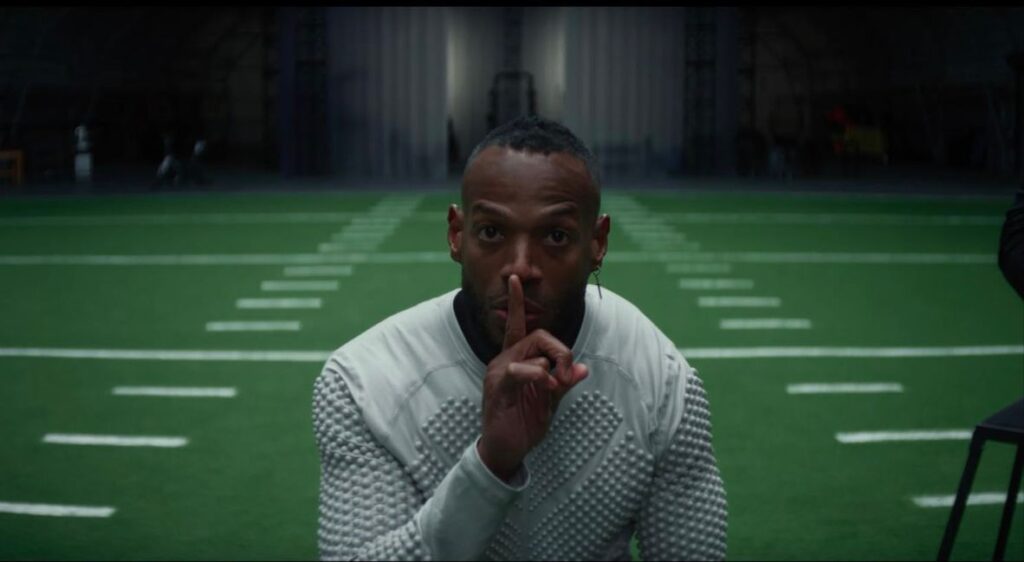At first glance, HIM looks like any other football drama: stadium lights, roaring crowds, a prodigious up-and-coming quarterback on the rise toward stardom. But as the film’s plot unfolds, it becomes clear that this is not just a story about playing football, but about the billion-dollar dark machine that operates it.
In American culture, football has always been more than a game; it is deeply ingrained in our country’s DNA. Many people may feel deeply connected to football because it embodies American values such as hard work, strength, and toughness. The sport brings people together. Although the players on the field are the ones playing the game, their fans share their triumphs and losses, making them feel like they are part of the game too.
However, as much as football is one of America’s greatest and most beloved pastimes, the sport has a dark side. Underneath all the passion and pageantry lies some harsh truths: American football is a national obsession, an industry worth billions, with a system that exploits players’ minds, bodies, and souls for entertainment.
HIM is a critique of professional football told through a horror lens. It is a more dramatic unveiling of the darker inner workings and machinery that groom, manipulate, and commodify athletes long before they ever enter the professional field.
Here are five ways the HIM explores the darker side and machinery behind the spectacle of American Football.
The Black Quarterback Problem
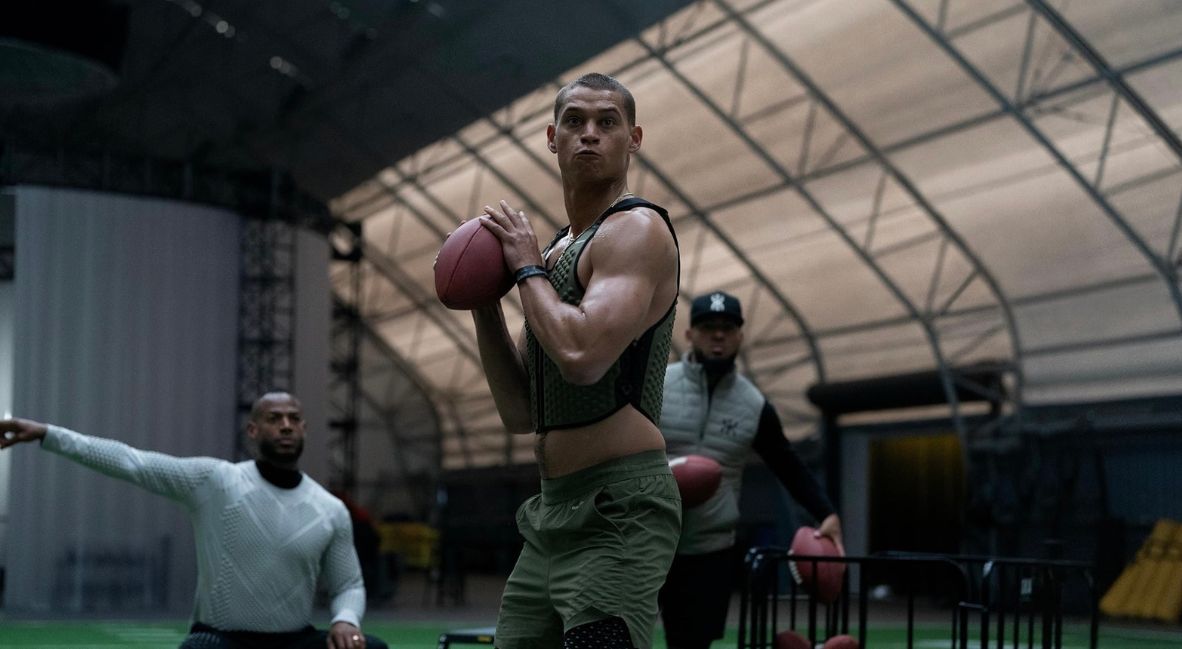
HIM’s story resonates even more because Cameron Cade (Tyriq Withers), the protagonist, is a Black quarterback, and historically, this has always been the rarest position for Black athletes to hold. For many years, Black quarterbacks were denied the chance to lead teams. Stereotypes framed them as having the athletic prowess and durability to play the sport, but not being intelligent enough to be a quarterback and be the face of a franchise.
For example, the National Football League was founded in 1920 and has been around for over a century. The first Black man to hold the quarterback position in the modern NFL was Willie Thrower in 1953. Meanwhile, in 1988, Doug Williams of the Washington Commanders became the first Black quarterback to win a Super Bowl. Even after achieving this tremendous accomplishment, it was treated as an exception, instead of a turning point to make the quarterback position more inclusive.
Unfortunately, this pattern has never really gone away. For example, Philadelphia fans and the media constantly criticized Donovan McNabb despite leading the Eagles to five NFC Championship games and a Super Bowl. Rush Limbaugh even claimed McNabb was only celebrated because “the media wanted a Black quarterback to do well.” Thus, trying to diminish any of McNabb’s accomplishments.
Another example is Michael Vick, who deserved criticism for his off-field dogfighting scandal. Still, the media scrutiny and public outrage around him far eclipsed the response to white players facing serious allegations, like Ben Roethlisberger’s sexual assault cases during the same era.
In HIM, this reality is distilled in one line from Isaiah White (played by Marlon Wayans): “I had to be great to be considered good.” It is a sad but true statement that reflects the fictional quarterback’s plight and the real-life lived history of Black quarterbacks in America. Their success signals progress, but their paths remain burdened with higher stakes, harsher scrutiny, and fewer margins for error.
Groomed From the Start
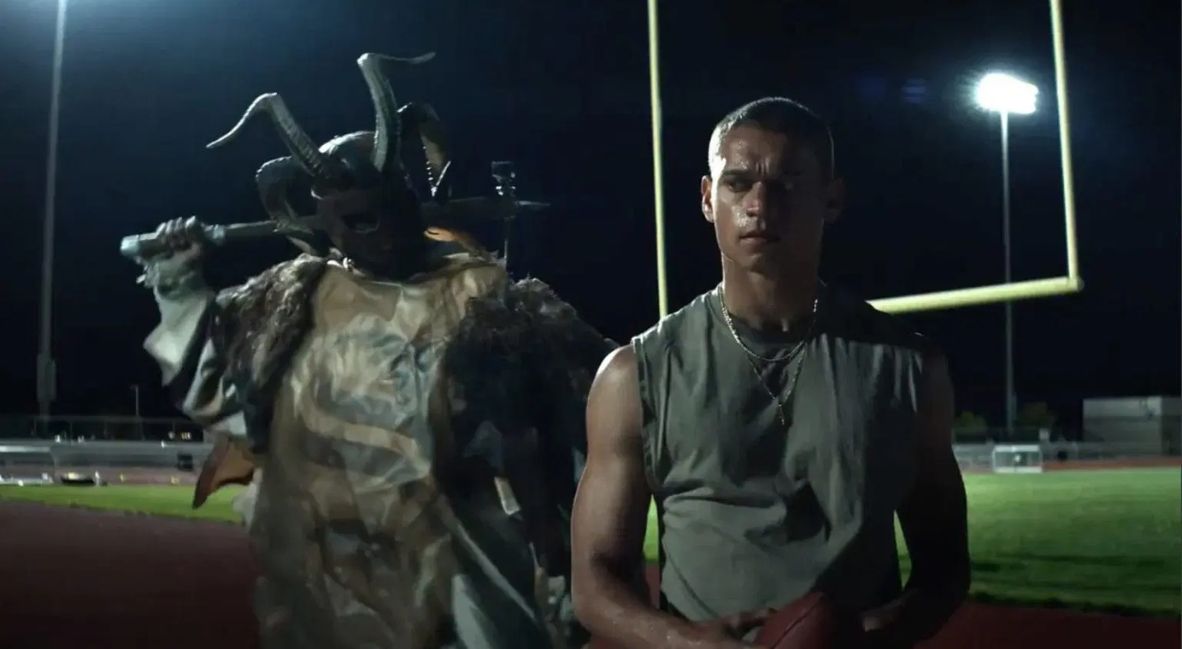
From the beginning, Cameron Cade, the rookie quarterback at the center of HIM, is positioned to be a rising star. However, by the film’s end, it becomes clear that his rise to stardom wasn’t just a matter of skill or chance, and that he is merely a young man caught in the industry’s machine. Nothing about his path to stardom was an accident; Cameron trained with his father for years to become a star player.
As the film’s story develops, it becomes clear that something more sinister is at the reins of Cameron’s destiny. Even after his attack, which left him with a traumatic brain injury that would have left any athlete sitting out for an extended period, an opportunity to train with his idol and football legend, Isaiah Washington, was offered to him.
From that point on, Cameron is put through a grueling seven-day training camp, and by the end of it, he comes to a much darker revelation: Cameron’s training by Isaiah did not happen by chance or miracle. Everything, from his training sessions with his father to his injury, was orchestrated by the owners of the Saviors to bring him there.
This moment of tension in HIM reflects the real world, where young athletes are often spotted and recruited as children. Football camps, travel teams, and high school scouting systems feed the pipeline. Families under financial pressure are told that their son could potentially be the next GOAT and that investing everything in their child’s football career could secure them a wealthy and stable future.
Family & Generational Wealth
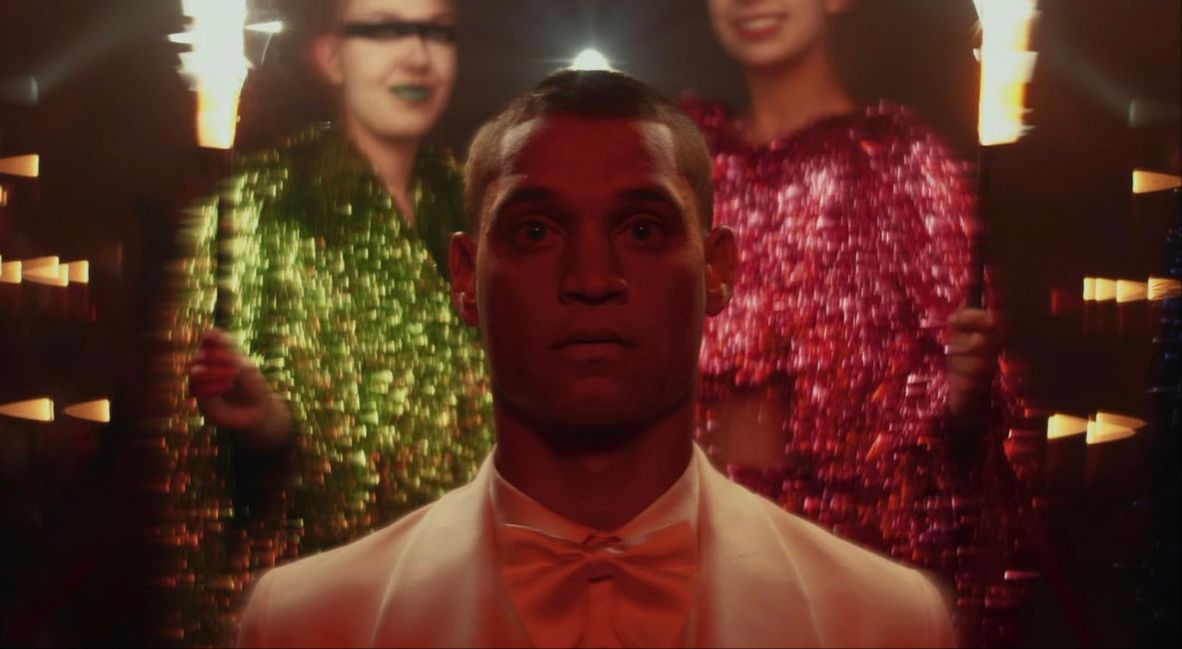
The promise that a professional athletic career can secure a family’s future is one of the sport’s most powerful myths, especially for the Black community. For many Black families, professional sports, such as football, are often viewed as one of the few viable paths to achieving generational wealth. HIM explores how institutions profit from athletes and how families can get entangled in the dark machine.
The dream and promise of a huge contract is tempting; one player’s talent and skills can secure a family’s finances for generations to come. However, the odds are not always in every athlete’s favor. Although Black athletes make up more than half of the NFL rosters, which is about 53% according to this survey from 2023, this number only represents a fraction of young Black men who dream of making it to the pros. The truth is that only 1.6% of college NCAA football players ever make it to the NFL.
HIM also captures Cam’s desperation and determination to sign a contract with the Saviors that could secure his family for generations to come. Unfortunately, the attack at the film’s start results in him being unable to perform at the combine, leaving him unsure about his career and his family’s future.
Cameron’s situation mirrors the harsh reality of the NFL and the drafting process. The combine can affect a player’s draft order, and the draft order alone can determine whether a rookie signs a huge multi-year, multimillion-dollar contract or a meager contract with less stability. Black quarterbacks, in particular, have typically been drafted lower than some of their white peers with similar levels of talent and skills.
Medical Professionals’ Duality & Dilemma
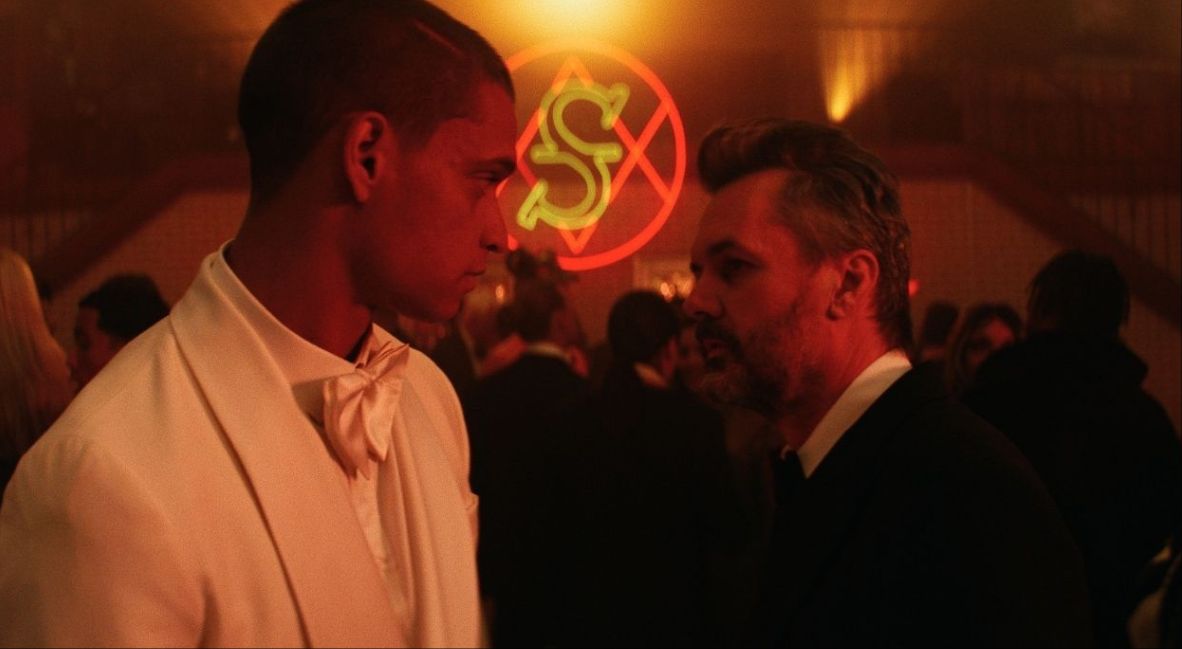
Marco, the athletic trainer, tries to repeatedly and subtly warn Cam throughout the film. Marco’s character embodies the dilemma and duality that sports medicine professionals often face. Athletic trainers and physicians are both protectors and enforcers of the system. In real-world athletics, trainers and team doctors should always prioritize the health and safety of athletes; however, their paychecks and loyalties may become influenced or skewed by the team’s ownership.
This tension creates blurred ethical lines. In HIM, the trainer briefly steps outside his role, urging Cam to escape before the system consumes him whole. Marco’s death serves not only as a plot device but also as a symbolic punishment for attempting to subvert the system. He is killed because he prioritizes Cam’s humanity and well-being over the team’s investment and plans.
The parallel to medical professionals in professional sports is poignant. Athletes rely on doctors and trainers to protect their long-term health, performance, and well-being. Yet, these experts sometimes fast-track recovery, push painkillers, or clear players before they are truly ready to play again. In contrast, when some medical professionals advocate for players and voice their concerns, they can sometimes be met with consequences.
The NFL’s long history of concussions and pain management scandals underscores this conflict. A prime example of this is Dr. Bennet Omalu, a forensic pathologist who made a groundbreaking research discovery that linked chronic traumatic encephalopathy, also known as CTE. In 2007, Dr. Omalu presented his work to the NFL, thinking the league would appreciate his research and take steps to make the game safer for athletes. Instead, the NFL dismissed his findings and gathered its own team of medical professionals and other experts to discredit Dr. Omalu’s work.
Owners’ Power & Agent’s Complicity
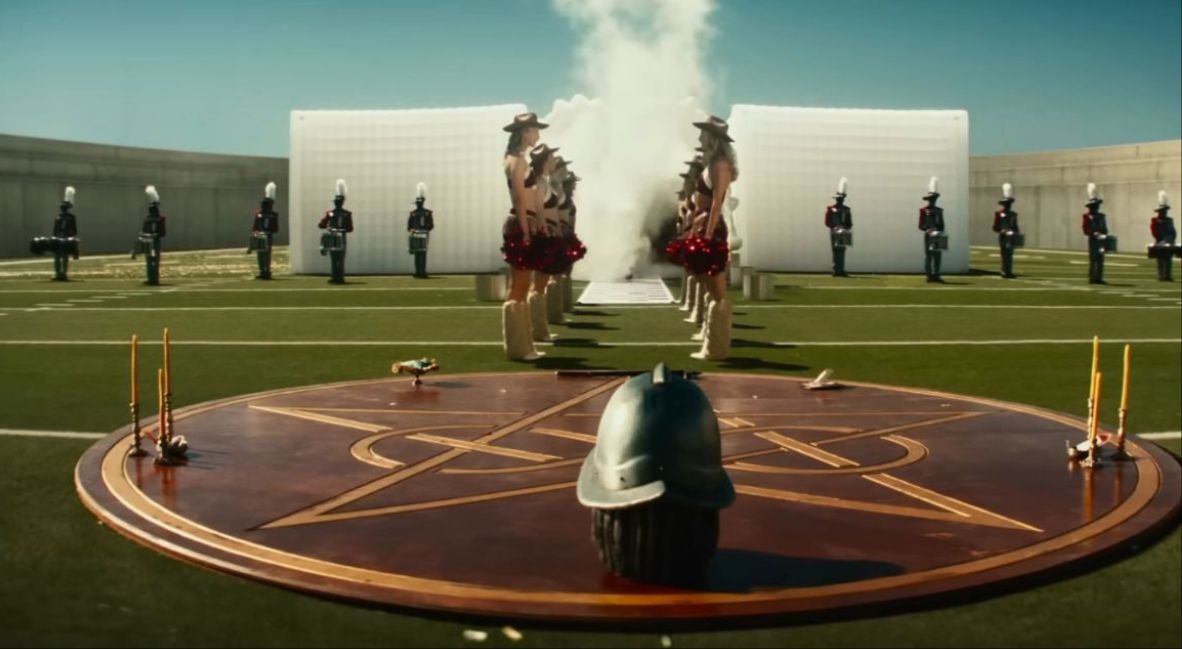
HIM also highlights the exploitative and corrupt aspects of sports team ownership. In HIM, the owners don’t just control the team; they control the players’ lives. Following Cameron’s final face-off with Isaiah, he quickly realizes that his autonomy and life as a football player have never been his own. And thus, quickly learns that his freedom is an illusion. Instead, the owners and the dark machinery of their industry use their influence and power to commodify and profit from athletes like Cameron.
Granted, the system in HIM is presented as a supernatural ritual; it still echoes the NFL’s real-world history of predominantly white ownership profiting from a largely Black workforce. Owners decide contracts, control free agency, and even shape league-wide discipline policies.
If ownership represents the top-down machinery, HIM also suggests that the people closest to the athlete, like his agent, can be complicit in the sinister aspects of the industry. In theory, agents work for the players and are meant to protect players’ interests. However, the film suggests that agents can also become another cog in the machine. When Cameron discovers his agent’s role in steering his career, it doesn’t feel like a shocking betrayal so much as confirmation; everyone around him has a stake in his compliance.
America loves football for all its pageantry, passion, power, and ability to bring people together. However, HIM looks deeper beyond the surface of the sport to explore the darker inner workings of the professional sports industry.
The film’s point is to challenge audiences to recognize that a dark system built on power, control, and the exploitation of athletes lies beneath the spectacle of American football. HIM’s critique of the sport challenges audiences to consider what kind of culture we contribute to when we celebrate a sport but ignore the cost to its athletes.
HIM is now playing in theaters.

